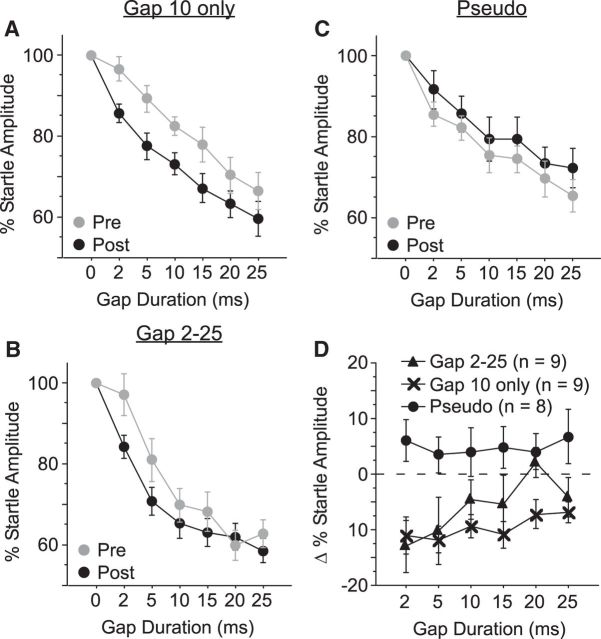Figure 6.
Conditioned fear to gaps generalizes to other gap durations. In a separate set of experiments, we measured gap detection in wild-type mice for gaps of 2, 5, 10, 15, 20, and 25 ms. A, In the first experiment, during conditioning, the 10 ms gap was paired with the shock, which was the only gap presented during conditioning (n = 9 mice). Gap detection was significantly enhanced for all gap durations after conditioning (ANOVA main effect, p = 0.036), with no specific enhancement for the 10 ms gap. B, In the second experiment, during conditioning gaps of 2, 5, 10, 15, 20, and 25 ms were presented, but only the 10 ms gap was paired with shock (n = 9 mice). Gap detection was significantly enhanced for all gap durations after conditioning (ANOVA interaction, p = 0.041), with no specific enhancement for the 10 ms gap. C, Unpaired presentations of the shock and all gap durations (pseudoconditioning) had no effect on gap detection behavior (n = 8 mice). D, The effects of conditioning did not differ between the two conditioning groups (A, B) and both exhibited significant decreased startle responses compared with the Pseudo group (C).

